Introduction

Pros: Comfort, efficiency, handling
Cons: Build quality, vibrations
The Bajaj Pulsar 180 is a model that has been present in the Pulsar series right since its inception in 2001. Over the years, both models, the 150 and 180 received updates and new colour schemes to stay relevant in the market. While the Pulsar 150, even today, is the highest selling product in the company’s portfolio, the Pulsar 180, on the other hand, has experienced a gradual drop in overall numbers.

Meanwhile, in the Pulsar series, the Pulsar 220F is a popular product that still has a strong following in the market despite sporting almost the same design since its introduction in 2007. Now, considering the scenario here, it makes all the more sense for Bajaj to make use of the Pulsar 220F's popularity and use it to revive the sales of the 180. Now, we had the new Pulsar 180F with us for a few days. During this time, we have extensively ridden the motorcycle and are quite pleased with it. Let’s find out how it managed to do that!

Quality

Now, in terms of looks, the Pulsar 180F is almost identical to the 220F, thus winning brownie points right there. Furthermore, the 180F gets a matte metallic grey finish that is further accentuated by neon orange highlights. While the combination looks good in pictures, in the flesh, it is a different case. While there are no concerns with the matte paint job which looks great, the neon orange highlights on the fairing and badging looks faded and tacky. A richer colour tone would have been much appreciated. However, it retains the same black exhaust canister with a brushed silver exhaust shield from the 180 as compared to the chunkier brushed steel finished one on the 220F. Besides that, the quality of the switchgear, fit and finish, and the look and feel of the plastics is identical to the 220F. It might not be the best in its class but is not bad either.
Comfort

For buyers in this segment, comfort is one of the important aspects and we found the riding triangle on the 180F to be just right. With the two-piece handlebars, split-seat design and mildly rear-set footpegs, the 180F offers a sporty yet very comfortable stance. The arms and knees are in a relaxed position nearly all the time which makes long distance journeys a lot less stressful. We say that after covering more than 500kms on the saddle on different road conditions and environments.

Next is the seat cushion which has the right amount of firmness that makes it comfortable to sit on for a long duration. The split-seat design has a small step-up for the pillion seat which in-turn helps the rider to sit securely on the seat when going flat-out. Also, the textured seat cover aids in keeping the rider and pillion in place even when the seat is wet.
From paved roads to moderately broken tarmac, the ride quality of the 180F is plush without much complaints. The suspension setup does a good job at attending to most of the undulations without transferring it to the rider.
Performance

In this department, the 180F remains exactly identical to the standard Pulsar 180. While it weighs the same it continues to be powered by the same 178cc air-cooled single-cylinder four-valve mill with Bajaj’s patented DTS-i technology. Power output is the same at 17bhp and 14Nm with fuelling handled by a carburettor. The motorcycle uses the same five-speed gearbox which it shares with other Pulsar models.

The motor has the typical Pulsar character, a strong mid-range starting at around 5000rpm mark which peaks at 8500rpm before redlining at 9500rpm. While the first three gears have a shorter gear ratio which help to build speed faster, the fourth and fifth are on the taller side, ideal for cruising. Speaking of speed, as the tachometer’s needle reaches halfway through the rev-band, vibrations start to creep into the motorcycle which can be felt at the bars and footpegs. Notably, the use of rubber on the footpegs largely helps to reduce vibrations for the rider. Unfortunately, this is not the case for the pillion, as the vibrations also go up along with the rpm. But again, for the rider at least, after a point, one does get accustomed to the vibrations and it doesn’t remain much of a concern.

Regarding the handling attributes of the motorcycle, it must be noted that the 180F isn’t designed to get the knee down while carving through tight corners. It is designed for manoeuvring effortlessly through city traffic and getting through smooth sweeping corners on highways. The added semi-fairing up front might feel intrusive at first while weaving through traffic but once you get the hang of it, you’ll probably find yourself at the start of every traffic signal. While out on the highway, the bike holds to its line well without disrupting its balance easily. During our tests, we found the 180F to be comfortably cruising at 80kmph at 6200rpm while the top speed achieved was 125kmph on open stretches.
Technology

Over here, the Pulsar 180F is more of a bare-basic motorcycle. Its setup is based on the update the Pulsar 180 had received in 2009 which included wider tyres, split-seat setup, clip-on handlebars, thicker front forks and swingarm mounted Nitrox gas-charger shock absorbers. Notably, it was also the same year when Bajaj introduced the carburetted version of the 220F. Besides that, the 180F continues to sport the same semi-digital instrument console with two trip meters and backlit switchgear.
The only modern technological upgrade on the Pulsar 180F is the addition of single-channel ABS for the braking system, which is now mandatory because of the updated motor vehicle law.
Fuel Efficiency

The Pulsar 180F is powered by the same motor that has done duty on the last three versions of the motorcycle it is based on. While the motor is dated, it still offers decent. performance along with a comfortable economy figure. During our road tests, the motorcycle managed to return a mileage of 39kmpl, which is ideal for a 180cc motor.
Fitness of Purpose

The Pulsar 180 had the reputation of being a powerful motorcycle in the company’s portfolio back when it was introduced. In the years that followed, that position was taken up by the 220F and the RS200 in the Pulsar series. The idea behind the introduction of the 180F has been to give the 180cc moniker a new lease of life which Bajaj achieved by using the 220F’s preferred styling and desirability factor.
The 180F, as a package, is a balanced product offering a decently powered motor, nippy handling and with attractive styling, which gives it a big bike appeal.
Our Take

The Pulsar 180F is a motorcycle that offers the kind of excitement the 220F provides but in a smaller package. It might have a motor that has been around for quite a while but it still has the punch to justify the Pulsar name. It has the agility that makes it an ideal motorcycle to switch lanes and make way through traffic with ease. It has the looks of a big bike akin to the 220F which adds to the desirability factor. And lastly, all this is available at Rs 11,226, lesser than the cost of a Pulsar 220F, which if you ask us, definitely sound like a good deal.
Photography by Kaustubh Gandhi
Gallery
1/60
Bajaj Pulsar 180F Action
Double Tap to Zoom











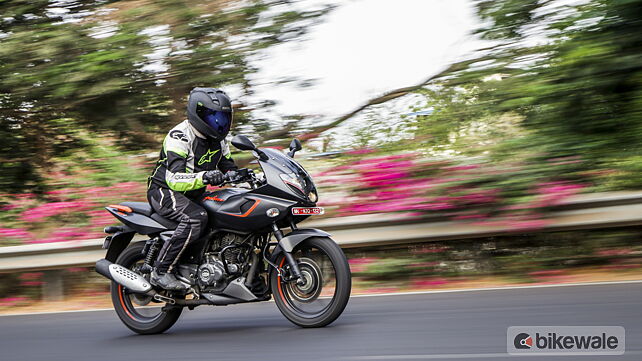












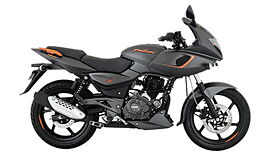















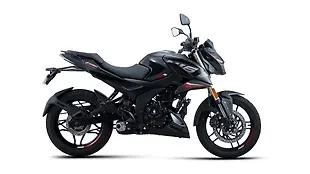
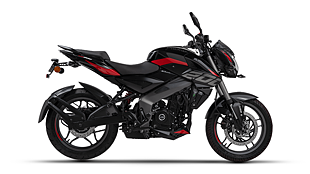
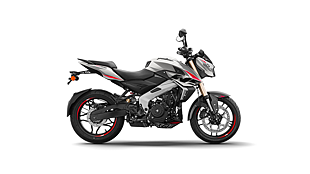





![KTM 390 Adventure X [2025] KTM 390 Adventure X [2025]](https://imgd.aeplcdn.com/272x153/n/cw/ec/190885/390-adventure-x-2025-right-side-view.jpeg?isig=0&q=80)